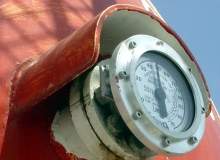
The 2,798km long Kazakhstan-China pipeline transports crude oil from oil fields located in western Kazakhstan to the Dushanzi refinery located in the Xinjiang Province of China. The 813mm diameter pipeline has a capacity of ten million tons a year (mt/y).
Kazakhstan-China Pipeline, a company jointly established by Chinese National Petroleum Corporation and KazMunaiGaz, built the pipeline. The total cost of building the pipeline is estimated at $3bn.
The pipeline was built to meet China’s growing energy needs. It provided a win-win situation for both Kazakhstan and China by directly linking Kazakhstan’s huge oil resources in the Caspian Sea with China’s strong oil consumer market.
Kazakhstan’s oil output is expected to cross 100mt by 2015. China’s energy needs are expected to grow steadily and the country is expected to import 65% of its oil by 2020. The new pipeline will enable China to meet these import needs.
In January 2011, the pipeline met its design capacity for the first time. It has transported more than 30mt of crude oil since the commissioning of the first section in 2006.
Construction and infrastructure of the Kazakhstan-China crude oil pipeline
Construction of the pipeline was divided into three segments and carried out in two phases. The first phase included the 448km long first section which starts at Atyrau near the Caspian Sea and ends at Kenkiyak. This section became operational towards the end of 2003.
The second phase included construction of the Atasu to Alashankou and Kenkiyak to Kumkol sections.
The 962km long Atasu-Alashankou section starts from Atasu in Kazakhstan and passes through three regions – Karaganda, East Kazakhstan and Almaty, before terminating at Alashankou in China.
Construction of this section commenced in September 2004 and finished in December 2005. The section became commercially operational in July 2006 and was estimated to cost $700m.
Crude oil from Kazakhstan enters China from an oil meterage station located at Alashankou.
The second stage of phase II of the pipeline included the Kenkiyak to Kumkol section in central Kazakhstan. Construction of the 761km long section started in December 2007. The section became operational in July 2009.
Three pig trap stations and 30 block valve stations are part of the Kenkiyak to Kumkol section. This section also includes a head pump station at Kenkiyak, a pump station at Kumkol, relief valves, a vertical steel tank and drainage tanks. Custody transfer stations, shock wave suppression units and surge relief valves are also part of this section.
The construction posed several challenges as the pipeline had to be installed in seismically active areas. A lack of infrastructure and harsh climatic conditions, such as extreme temperatures and heavy flood and rain waters, posed problems.
An oil pump station for the Atasu-Alashankou section of the pipeline is being planned. The new pump station will increase the capacity of the pipeline to 12mt/y.
Technology used as part of the pipeline project
Team Simoco supplied its Xfin Radio System for the pipeline.
The system provides reliable communications across the length of the pipeline to address emergency situations and possible shut down.
The system is installed across 19 base sites of the pipeline. Each site is equipped with Xfin base stations.
Operators across the 19 base sites are equipped with portable radios and vehicle mobiles to enable them to communicate.
An IP network over the length of the pipeline provides enhanced voice and data communications.
Contractors involved the Chinese crude oil pipeline
Alcatel was contracted to provide an integrated telecommunication solution including a supervisory control and data acquisition (SCADA) system for the Atasu-Alashankou section of the pipeline.
The contract also included supply of VSAT back-up systems, hotline systems and video conferencing systems to improve the operational efficiency of the pipeline. Alcatel also supplied CCTV systems, a UHF trunking radio system and a data network.
ILF Consulting Engineers provided project management and consulting services for the Kenkiyak to Kumkol section of the pipeline.



